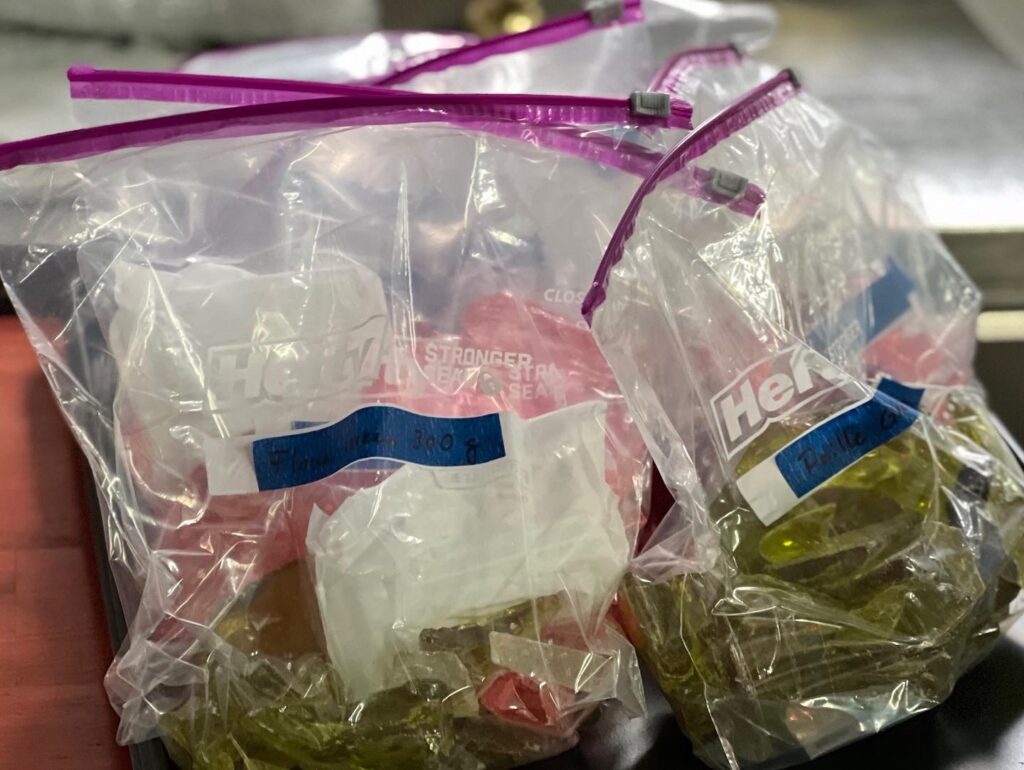Up to this point, we have been discussing the process, rules, and regulations each team must adhere to for each of the four tasting tests. Now, we are going to cover the three artistic creations or centerpieces that must accompany the desserts on the buffet table.
The competitors must create three centerpieces: one made from various forms of sugar, one made from chocolate, and a sculpted water ice creation – in other words an ice carving. Each of these sculptures must tie in with the overall theme, this year it is Climate Change, and create a cohesive competition.
Although each centerpiece is impressive, typically it is the sugar sculpture that always gives the “wow” moment for most fans. Bringing this sculpture to the buffet table always creates the most tension – for the chefs and the fans – more than any other sculpture.
Including the base, the sugar sculpture cannot be more than 165 cm or 5.41 feet in height. The base height cannot exceed 20 cm or 7.87 inches in height.
Each team must incorporate a vegetal composition within their sculpture. This element, whether it is a ribbon, foliage, realistic or abstract flower, must be homogenous in composition.
The rules state that this “imposed item” must be between 30 – 35 cm (11.8″ – 13.7″) of non-molded, non-imprinted sugar. Additionally, another required element is a blown sugar piece. This piece is to “highlight the workmanship” of the team. It may be colored throughout or simply on the surface.
The Jury will be looking to insure that the sugar centerpiece is composed of varying techniques of sugar work. According to the rules, the centerpiece must be composed of the following elements (as expressed by volume):
- 30% pulled sugar (ribbon, foliage, flower, etc.)
- 30% blown sugar
- 15% pastillage
- 25% free sugar (excluding pastillage and royal icing)

As food coloring is permitted, the sugar artist may use an airbrush gun to color the centerpiece, however, as previously stated, the teams must bring their own airbrush gun and it cannot obstruct the view of the committee, judges, or the audience.
Solid molds are permitted but must not exceed 3 cm or 1.18 inches in thickness. Hollow molding is also allowed for the structure of the centerpiece. In regards to the pastillage pieces, they may be made in advance, but they must be white in color only. They also cannot be uniform dyed, glued, or assembled in any way.
The sugar centerpiece must fit within the constraints of the buffet table. The teams are permitted to finish their piece while it is on the buffet table, but must be within the time limits.
After judging, the teams must move their creations – once again – to the exhibition area for the general public to view. The rules say that the “teams must be able to dismantle and move their artistic piece” and the I.O.C. “may probe” sugar piece at the end of the test to “control the assembly where necessary.”
Part Seven will cover the rules, regulations, and requirements for the chocolate artistic creation and sculpted Valrhona chocolate block.